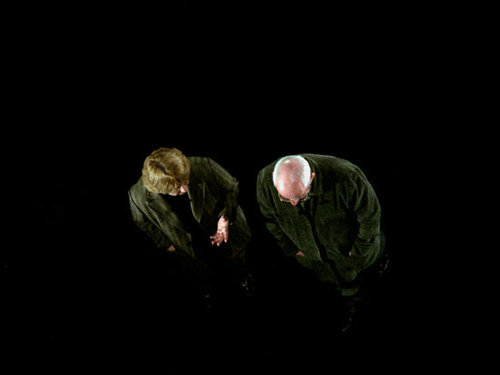Dave Hullfish Bailey
Margit Czenki
Christoph Schafer
Christoph Draeger
Marjolijn Dijkman
Azin Feizabadi
Kianoosh Vahabi
Cornelia Hesse-Honegger
Rene' Luck
Eva Meyer Keller
Claudia Mucha
Lisi Raskin
Lise Skou
Nis Romer
spector cut+paste
Markus Dressen
Anne Konig
Jan Wenzel
Andrei Ujica
Ingo Vetter
Sophie Goltz
Christine Heidemann
Anne Kersten
Vera Tollmann
Oliver Clemens
Sabine Horlitz
27/3/2008
Katastrophenalarm
NGBK, Berlin
Artists were invited to analyse the mechanisms used to convey a sense of danger and the visual presentation of catastrophes. Some chose to take actual images or situations from the media as their starting point - for instance, the reporting of Hurricane Katrina; others adopt a theory of culture approach to discuss the meaning of catastrophe as a concept, the effect it has on society or to go in search of the new vocabulary produced by the specific rhetoric of disasters.

Artists: Dave Hullfish Bailey (USA), Margit Czenki / Christoph Schäfer (D), Christoph Draeger (USA/CH), Marjolijn Dijkman (NL), Azin Feizabadi / Kianoosh Vahabi (D/IR), Cornelia Hesse-Honegger (CH), René Lück (D), Eva Meyer Keller (D), Claudia Mucha (D), Lisi Raskin (USA), Lise Skou / Nis Rømer (DK), spector cut+paste (Markus Dreßen / Anne König / Jan Wenzel) (D), Andrei Ujica (D/RO), Ingo Vetter (SE/D)
One dramatic weather event follows on from the next: floods, droughts and storms are reported from throughout the world, further heating up the debate of environmental risks and crises. Media arguments that catastrophic climate changes are impending make for a constant state of public alarm so as to create an atmosphere of fear and strengthen established positions of power. A threat is repeated, presented as being real – the result is a state of emergency. If things go no further than the forecast, however, a post-catastrophic consciousness arises wherein political action appears to be hopeless. Who is behind the current 'red alert' and who is it that benefits from it?
The "Katastrophenalarm" exhibition examines media fabrications of this kind and the appropriation of environmental disasters by politics. Artists were invited to analyse the mechanisms used to convey a sense of danger and the visual presentation of catastrophes. Some chose to take actual images or situations from the media as their starting point – for instance, the reporting of Hurricane Katrina or the environmental situation around California's salt-contaminated Salton Lake; others adopt a theory of culture approach to discuss the meaning of catastrophe as a concept, the effect it has on society or to go in search of the new vocabulary produced by the specific rhetoric of disasters. Many businesses make use of this language too and claim in their advertisements to have a 'green awareness'.
The social causes of environmental danger and crises are frequently transfigured to produce the impression they are the results of an act of god. In this way the scenario of climate change becomes a stage setting, used to present the arguments of political or economic powers seeking to protect their secular interests by concealing them within quasi-religious stories: the mistakes of mankind lead to a global cataclysm, which depending on the underlying motivation is described as being unavoidable or just possible to avert. The figure of the hero, appearing in the guise of the future-oriented and environmentalist scientist, politician or industrialist, is thus given a new degree of magnetism.
These roles, stories and images that characterize a disaster are made visible in the exhibition, "Katastrophenalarm". Shouldn't we all be alarmed in the face of this kind of fabrication and instrumentalization, which is itself a part of the 'catastrophe' and with that of society's relations with nature?
An artists' book will be published to accompany the exhibition and in cooperation with the Leipzig magazine "spector cut+paste“ a special edition focussing on climate change.
"Katastrophenalarm" is curated by the NGBK project group: Sophie Goltz, Christine Heidemann, Anne Kersten, Vera Tollmann, Ingo Vetter / Architektur: Oliver Clemens, Sabine Horlitz
Image: Andrei Ujica, Unknown Quantity, 2003/05
Opening march 28
The New Society for Fine Arts (NGBK)
Oranienstraße 25 - 10999 Berlin
daily 12 – 18.30 h



